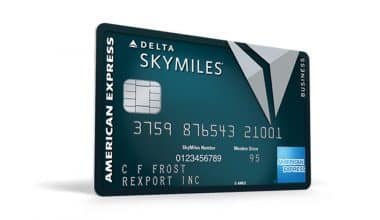401(k) accounts are workplace retirement savings programs to which employees can contribute pre-tax cash while receiving employer-matching contributions. Those who contribute to workplace 401(k)s must understand the regulations for required minimum distributions, or RMDs because RMD rules force accountholders to begin withdrawing money at the age of 73 (formerly age 72) or risk significant IRS penalties. This article will explain why RMDs exist, what the RMD requirements for 401(k) plans are, what exceptions exist, how to avoid RMDs, and how RMDs affect you if you inherit a 401(k). After you reach a certain age, you must receive an RMD from your 401(k) account. However, if you are still working when you reach that age, the plan may allow you to postpone starting RMDs until retirement.
401k Distributions
When you reach retirement age, you must determine what to do with your 401(k) funds. In general, you will have some, if not all, of the following options: leave your money in the plan, take a lump-sum distribution, roll the money into an IRA, take periodic distributions, or buy an annuity through an insurer recommended by the plan sponsor (i.e., your employer). The majority of what you hear about 401(k) plans is about taking advantage of your employer’s match and making sure you roll the account over when you change jobs. But what happens to all that cash when you retire? Learning the ins and outs of 401(k) distributions can not only prepare you for the day when you need that money but will also emphasize the need to put it aside now.
When it comes to your retirement funds, 401(k) plans will not be available to you right away. In other words, you can’t retire at 50 and expect to cash in—at least not without paying a large penalty. The decision of when to retire and how to stretch your money across the many stages at which these assets become accessible is central to retirement planning. While 401(k) dividends begin at age 59 1/2, social security benefits do not begin until age 62. And, while age 59 1/2 may be a number you’re familiar with, age 72 is probably not.
When you’re ready to start withdrawing money from your 401(k), there are five primary options that will help you select how much you withdraw. The first choice is a rollover. A rollover allows you to transfer money from your 401(k) to another type of account where it can continue to grow during retirement. This is especially handy if you don’t intend to withdraw the money.
Minimum 401k Distributions
Retirement savings cannot be kept in your account indefinitely. You must normally begin withdrawing from your IRA, SIMPLE IRA, SEP IRA, or retirement plan account when you reach the age of 72. RMD rules apply to designated Roth investments in a 401(k) or 403(b) plan in 2022 and 2023. RMDs from qualified Roth accounts, however, are no longer required for 2024 and later years. RMDs for 2023 are still due by April 1, 2024. The minimal amount you must withdraw from your account is known as your mandated minimum distribution.
- You are permitted to remove more than the minimum amount needed.
- Any portion that was previously taxed (your basis) or that can be paid tax-free with your withdrawals will be included in your taxable income.
You must withdraw your RMD by December 31 of each year following your necessary commencement date. For the first year after you turn 72, you will normally have two mandated distribution dates: an April 1 withdrawal for the year you turn 72 and an extra December 31 withdrawal. Instead of waiting until April 1 of the following year, you can make your first withdrawal by December 31 of the year you turn 72. This would allow you to include the distributions in your income in different tax years.
If your distribution does not fulfill the conditions for a qualifying distribution, a 10% early distribution penalty will apply. Taking an early withdrawal from your 401(k) is almost never a wise decision. You will not only pay the 10% penalty and any income taxes due on the distribution, but you will also sacrifice future tax-advantaged growth. However, in some situations, it is your best alternative, because the IRS has specific guidelines that allow you to receive your funds early.
401k Distributions Rules
Common strategies to save for retirement include 401(k) plans and other tax-advantaged retirement savings accounts. Millions of Americans contribute to these long-term savings vehicles each year. Unexpected events may require someone to withdraw funds from their 401(k) early. You can take money out of your 401(k) before the age of 59 1/2. However, early withdrawals are frequently subject to steep penalties and tax consequences.
In general, distributions of elective deferrals are not permitted until one of the following events occurs:
- You die, become handicapped, or are otherwise terminated from your job.
- The plan expires, and the employer does not develop or maintain a new defined contribution plan.
- You reach the age of 59 1/2 or suffer a financial setback.
Distributions may be made in the following ways, depending on the terms of the plan:
- Nonperiodic distributions, such as lump-sum distributions or
- Annuity or installment payments are examples of periodic payments.
Distributions from your 401(k) plan are taxable unless rolled over as indicated in the section under “Rollovers from Your 401(k) Plan.” If you get a lump-sum payout from a 401k plan and were born before 1936, you may be able to choose between two methods of calculating the tax on the payment.
Required distributions. A 401(k) plan must state that you will:
Receive your entire interest (benefits) in the plan by the required beginning date or begin receiving regular periodic distributions in annual amounts calculated to distribute your entire interest (benefits) over your life expectancy or the joint life expectancy of you and your designated beneficiary (or over a shorter period) by the required beginning date.
Minimum Distributions
These mandatory distribution requirements apply to each eligible plan separately. You cannot satisfy a plan obligation by taking a dividend from another plan. The plan document must state that these rules take precedence over any previously given inconsistent distribution alternatives.
Minimum distribution. If your account balance is to be disbursed, the plan administrator must decide the bare minimum that must be distributed to you each calendar year. The required start date is April 1 of the year after the later of the following years:
- The calendar year in which you turn 70 1/2.
- The year in which you retire.
Required Minimum 401k Distributions Table
The IRS uniform lifetime table, often known as the RMD table, is a life expectancy chart meant to assist you in calculating your RMDs based on the number of years you expect to live and the amount of money in your retirement accounts. Unmarried owners, married owners whose spouses aren’t more than 10 years younger, and married owners whose spouses aren’t the sole beneficiaries of their retirement funds can use the chart below.
Simply divide the year-end value of your IRA or retirement account by the distribution period value that corresponds to your age on December 31st of each year to get your necessary minimum distribution. Because each age starting at 72 has a matching distribution period, you must calculate your RMD each year.
73 =26.5
74 =25.5
75 =24.6
76 =23.7
77 =22.9
78 =22
79 =21.1
80 =20.2
81 =19.4
82 =18.5
83 =17.7
84 =16.8
85 =16
86 =15.2
87 =14.4
88 =13.7
89 =12.9
90 =12.2
91 =11.5
92= 10.8
93 =10.1
94 =9.5
95 =8.9
96 =8.4
New York State Tax on 401k Distributions
Money withdrawn from pensions, 401(k)s, 403(b)s, and IRAs is aggregated and taxed like ordinary income. Tax rates range from 4% to 10.9 percent, the same as for other types of income. However, federal and New York state pensions, as well as military retirement pay, are tax-free. The first $20,000 of retirement income (from a company pension, an IRA, a 401(k) account, or another retirement plan) is tax-free for persons aged 59 ½ or older. Married couples benefit from a double exemption (each spouse is entitled to the $20,000 exclusion), for a total exemption of $40,000. You must pay income tax on monies withdrawn from a pre-tax 457 plan or a pre-tax 401(k). Employees who take pre-tax 457 and 401(k) payouts are subject to obligatory federal tax withholding as well as applicable state and local taxes.
Withdrawals from a 401(k) or conventional IRA are taxed as ordinary income once they begin. The taxable portion of your distribution will be reported directly on your Form 1040. Keep in mind that the tax implications of a Roth 401(k) or Roth IRA vary. When you take a 401(k) distribution, your retirement plan will give you a Form 1099-R. This tax form indicates the total amount you withdrew as well as the 20% federal tax withheld from the distribution. When you make a 401(k) distribution of $10 or more, you will receive this tax form.
Are 401k Distributions Counted as Income?
Withdrawals from a 401(k) or conventional IRA are taxed as ordinary income once they begin. The taxable portion of your distribution will be reported directly on your Form 1040.
What Is the Maximum Distribution From a 401(k)?
In general, if your plan allows it, you may borrow up to 50% of your vested account balance, up to a limit of $50,000. Unless the loan is utilized to purchase your primary residence, it must be repaid within 5 years.
What Percent of a 401(k) Is Best?
Many experts recommend putting aside 10-15% of your annual pay in a retirement savings vehicle such as a 401(k). Of course, when you’re just starting out and attempting to build a financial buffer and pay off student loans, that’s a lot of money to save.
Should I Take a Distribution From My 401(k)?
Withdrawing from your traditional 401(k) should be your last alternative, as any withdrawals made before the age of 59 1/2 will be taxed as income by the IRS, plus a 10% early withdrawal penalty. This penalty was imposed to deter people from withdrawing funds from their retirement accounts too soon.
How Do I Get My 401k Money?
By the age of 59.5 (and in certain cases, the age of 55), you will be able to begin withdrawing funds from your 401(k) without paying a penalty tax. To request a withdrawal, simply contact your plan administrator or go into your account online.
When Can I Withdraw From 401k Without Penalty?
To make penalty-free withdrawals from retirement accounts, account holders must be at least 59 1/2 years old, with the IRS requiring RMDs beyond age 73. Depending on the sort of 401(k) or retirement plan you have, there may be exclusions.
What Is the Best Way to Withdraw From a 401(k)?
Borrowing from your 401(k) may be the greatest option, but it is not without risk. Consider the Rule of 55 as an alternative method of withdrawing funds from your 401(k) without incurring a tax penalty.
Can I Withdraw 100% of My 401(k)?
If you cash out your whole 401(k), you will receive whatever is left over after taxes (and penalties if you are under the age of 59.5).
How Does a 401(k) Work?
A 401(k) allows an employee to designate a portion of their salary to be deducted from each paycheck and invested in their account. Participants can deploy their funds among the plan’s investment options, which often include a number of mutual funds.
What Happens to a 401(k) After Retirement?
When you retire, you have three options for your 401(k) money: leave it in the plan, transfer it to another qualifying retirement plan (such as an IRA), or withdraw all or a portion of it.
Conclusion
A good 401(k) provider will notify you and compute your required minimum distributions (RMDs). When you are approaching RMD age, keep an eye out for reminders from your 401(k) provider. Even if you do not answer, your 401(k) provider will usually send you the RMD amount. However, it is ultimately your obligation to guarantee that your RMDs are disbursed in a timely manner, which is why the IRS penalizes you for deficits.
Related Articles
- 401K WITHDRAWALS: Rules & 4 Ways To Avoid Penalties
- What Happens to 401k When You Quit: Best 2023 Practices (updated)
- WHAT IS 410K: How It Works, Benefits & Withdrawal






